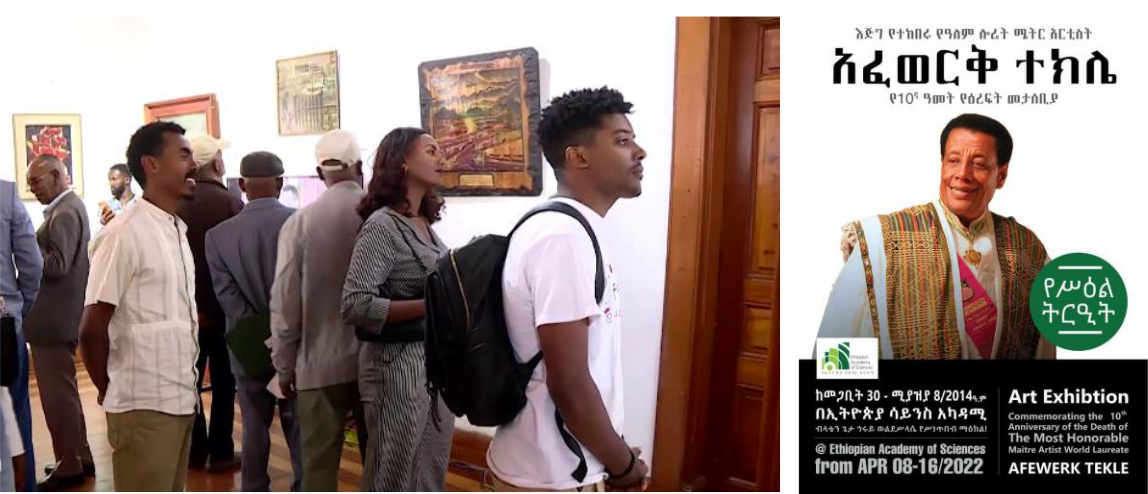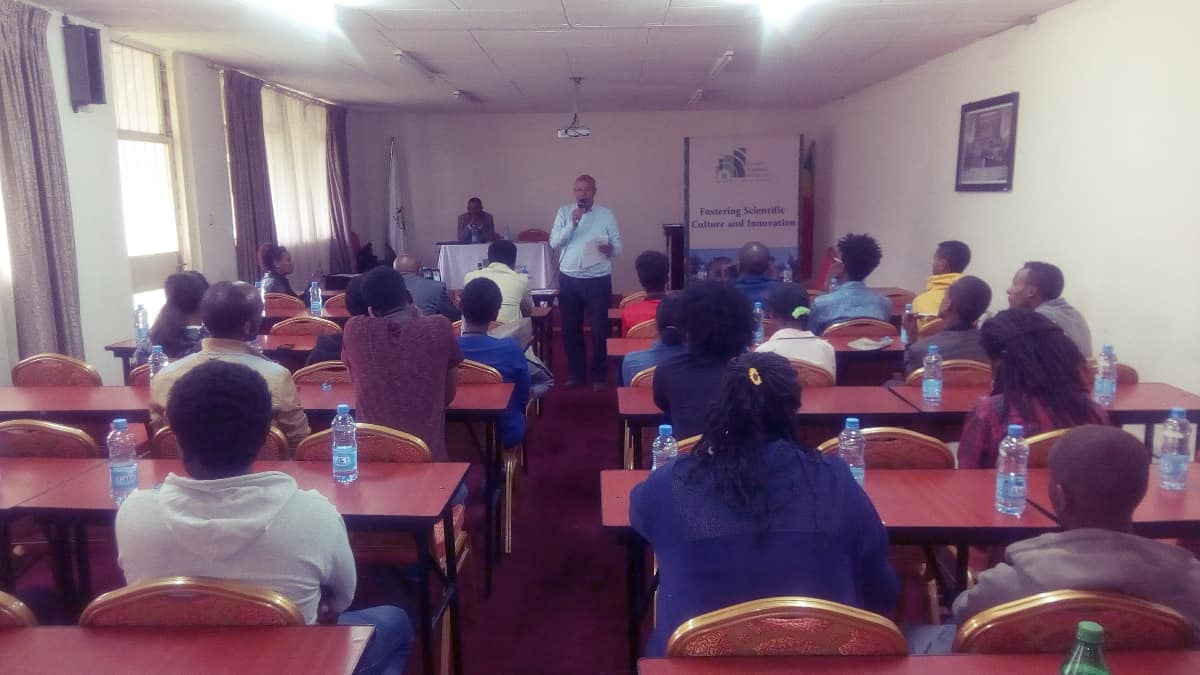Blaten Geta Hiruy Woldeselassie
Creative Art Center

Who is Blaten Geta Hiruy Woldeselassie?

Blaten Geta Hiruy Woldeselassie (BGHWS) born in Menz, Shoa, and district in 1878, Hiruy rose from a modest background to achieve one of the highest ranks in intellectual and diplomatic achievements of his time. He ranks among the most prominent intellectual of his time, an outstanding diplomat Ethiopia ever had, and a venerated educator.
He also served as Director- General of the Addis Ababa Municipality, Lord Mayor, Judge of the Special Court and Foreign Minister of Ethiopia. He was a proponent of a strong alliance with Imperial Japan, and following a visit to Japan in 1931advocated development in Ethiopia to follow the Japanese model. He was known for writing his “Japanizer” views as well.
He is also considered one of the pioneers of Amharic literature, having written close to thirty books of fiction and non-fiction. His works reflects a high standard of morality, prophecy and maturity highly influenced by his faith in the Ethiopian Orthodox Church and early upbringing and education in church dogma and practice. Blaten Geta Hiruy went into exile during the Fascist occupation of the country. He taught at the London School of Oriental Studies until he died in 1938.
The Heritage Site:

The former residence of the late Blaten Geta Hiruy Woldeselassie (BGHWS) is an adequately fenced large compound covering over 13,500 square meters of land and buildings consisting of: -The main house that was formerly the residence of BGHWS, -A Birds zoo, a miniature castle built of bricks, -A modern lion zoo, built of bricks, and -Two deep wells and a large water reservoir. The residence was built between the 1920s and 1930s. It was one of the modern architectural structures in that period for Addis Ababa. The building is partially connected to the mound, so the front side view has the graceful look of the G+1 building, and when turning at the back side of the building it looks like a modest wide villa. The building is made from bricks, strong rock pieces, and oak wood. It has more than 17 rooms of different sizes and shapes.

Since 2012, the building has been serving as the headquarters of the Ethiopian Academy of Sciences, with the Academy as the custodian of its heritage. As a result, the Academy has established a Center for Creative Arts named after BGHWS in the residence. This center has a mini-museum in one of the rooms of the building to commemorate Hiruy. The building also houses exhibition space, library, residence space for artists, offices, and more. In addition, academic, artistic, and cultural events are held regularly both indoors and outdoors throughout the premise as part of the activities depicting EAS's commitment to promoting scientific culture in Ethiopia.

Purpose of the Center (BGHWS-CAC)
-To foster appreciation of the arts and cultural awareness
-To nurture interest in artistic expiration, further artistic production, and enrich peoples’ lives through exciting programs and services.
Target group – anyone, especially the young, live in Addis Ababa and Neighboring towns.
BGHWS – CAC Goal
- To make the Ethiopian Academy of Science a vibrant cultural and intellectual center where ideas, creative talents and artistic expressions are fully explored, articulated, cultivated, and exchanged. -To entrench the academy as a leader in the country in its support of the arts and culture, serving the needs of the population and creating a richer, vibrant and a welcoming center and in the process build its organizational capacity.
Main Activities
- Dedicated a memorial space of BGHWS at the center - Organize regular programs on culture and the arts. - Exhibit paintings, sculptures and photographs. - Set up an artist – in – residence program to help artists to work in cooperation with national and international organizations/ individuals on the arts. - Work in cooperation with national and international organizations/individuals on the arts.
Dedicate a memorial space for Blaten Geta Hiruy:-
-The purpose was to life and times of Blaten Geta Hiruy and memorializes the man himself and his seminal works. The Center worked with Blaten Geta Hiruy's grandchildren to collect is memorabilia such as books,
manuscripts, correspondences, commentaries on his works, pictures, and eating utensils. It also dedicated a room for that purpose and bought shelves to showcase Blaten Geta Hiruy's mementos. The room has been visited by hundreds of guests and students.

i. Organize regular programs on culture and arts:-

The purpose was to provide a free space to artists, specifically to youngand emerging ones, to help them displaytheir creative works and get recognitionamong the population and beyond. Thusfar, more than 100 programs have beenorganized through the bi-monthly program, Renowned members of the arts community in theatre,"painting, journalism, music, graphics, books, films, poetry, and cultural traditions (music and menzuma] shared their experiences: skills and knowledge onthese occasions. Theatres (e.g., Engida) and individual performances (e.g]. Festale) have also been performed and famousindividuals such as author Solomon Deresa, Dagnachew Worku, and the late music arranger Elias Melka have also been memorialized.
ii. Exhibit paintings, sculptures and photography:
ii. Exhibit paintings, sculptures and photography: The purpose of this program was to create a space for cultural renaissance where individual’s exhibit their creative works and maximize their possibilities for learning and foment community engagement. Extensive photography exhibitions, on the Three Yekatits (the Yekatit 12 massacre of Ethiopians by fascist Italia, the Yekatit 1966 evolution and the battle of Adwa) and Hiruy Wolde Silassie (Life and contribution of Hiruy) have been presented by Endalegeta Kebede. The works of artists such as Cherinet Wolde gebriel, Tamirat Siltan and the works (Zigetism) of sculptor Tesfahun Kibru, the well-known international artist Laureate Maitre Artist Afewerk Tekle’s memorial Art Exhibition have also been exhibited in the Center and visited by thousands.

iv. Set up an arts residence program for artists:
The purpose of the program was to encourage artists, particularly 'emerging artists, through the artist-in residence program by providing them with minimal stipend so that they can engage in their creative: endeavors. Artist Cherinet Wolde Gebriel and sculptor Tesfahun Kibru have been able to benefit from the program and were able to display their works. In return, EAS was able to receive donations of six paintings and sculptures from the artists.
v. Work in cooperation with national and international organizations/individuals on the arts:
The Center provided space for the Ethiopian Writers Association where a, Four -year consecutive literary training has been provided. A number of emerging writers were able to present their works during their graduation ceremonies. The Center collaborated with the British Council, to provide training to homeless kids in drawing, painting and other artistic expression. : The Center also worked to get EAS to host for two weeks the Great African Caravan group, individuals who had comefrom different counties and had teamedup to promote peace and celebrate cultural diversity. The Center collaborated with the CulturalCenter of Addis Ababa University to show Afajshign, the seminal work of Kegn Geta Yoftahe Negussie; and the Sisay Begena School on the status of Ethiopian traditional musical instruments. A Begena performance had also taken place during theoccasion; The Center also joined with Dila University Cultural Center to make presentations and discussion on Ethiopian literature.
Stake holders
• Government of Ethiopia, its agencies, authorities and regional structures.
• Artists and cultural personalities.
• Art and cultural researchers.
• Professional Associations.
• Universities.
• Research centers.
• Other local and international related bodies.



